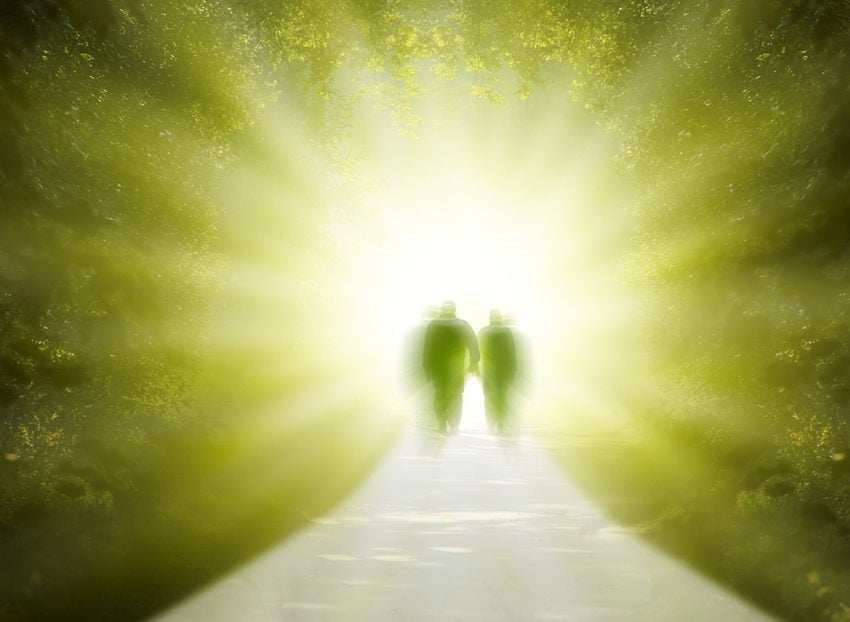
Raymond Moody, philosopher, psychologist, physician, and author, was the first man to discover and research near-death experiences. During patient interviews, he studied near-death experiences (NDE) and questioned people who claim to have undergone the 9 stages of the “journey to another world”. With this information, he claims to have gained insight into what happens after death.
According to his research, these are nine stages that are common in all near-death experiences. More of less, each account holds similarities to one another. So what happens at each stage? What does it look like and what happens after death, according to Raymond Moody?
In the first stage, the heart stops beating – there is a silence signifying the journey is over. Patients who have had these experiences “abandon” their physical bodies, lift and see themselves lying in the hospital room. Most believe in a soul, and assume this is the flight of the soul, out and onto greater things.
Patients described that the second stage brings them to a narrow tunnel, This tunnel ends at an incredible light. This light provoked beautiful feelings of warmth and comfort and seems to greet the soul’s entry into another plane.
The light is the brightest ever seen, and as they reached the third stage, they saw figures in the distance. It was the spirits of dead relatives and friends welcoming them into the light. This has got to be the most wondrous feeling in the world and convincing of life after death.
In the fourth stage, they found themselves in a phantasmagoria, a dreamlike state of images. When asked to describe what happened here, however, they said it was difficult because time didn’t make sense in this place. It seemed to stop, yet everything happened in an instant.
At the fifth stage, every detail of life passed in front of them, as if there was no time. Images of love, family, tragedy, and sorrow were displayed like a movie.
At the sixth stage, while reviewing their lives, they felt accompanied by an entity that had the form of light. Maybe it was an angel or maybe something which defies explanation.
With Christian patients, interviewed during the research, the majority said they recognized Christ in that light, and they felt a presence of absolute love and compassion that helped them through the review of the images. Supporting them while they viewed the things they had done during life.
They viewed the events from a totally different perspective than when they had experienced them in life, resulting in a deeper feeling of conscience and responsibility for their actions, and the impact these deeds had upon the lives of others.
Then they reached the seventh stage, where they had to return. From his point, there were two different stages, branching in opposite directions: some said they had no idea how they returned! At the eighth stage, once they were in that light, they awoke to find themselves in the hospital room, back in their physical body.
Others claim that at the ninth stage, the “ray of light” told them that they had to return because of important unfinished assignments.
Raymond Moody said,
“I’ve interviewed several people who were at this critical point, literally between life and death, and many of them told me they wanted to stay there, despite the fact that someone was pressuring them to return.”
Many of those who returned said that they would prefer to have stayed in that light, but realized they had to turn back. In most cases, the reason was to take care of their families.
When they returned, they realized how this experience affected their lives. Whatever they had been “hunting” before: fame, power, money or anything else, after this experience they realized that the most important thing we can do as human beings is to learn how to love. To love others as we love ourselves, that is the greatest of all virtues.
Furthermore, after this experience, death no longer causes fear. According to Raymond Moody, this is what happens after death. He says that what we call death is simply a transition to another state of being. And it is exactly what Plato said more than 2,300 years ago,
“I have good hope that there is something after death.”
Do Raymond Moody’s observations give solid evidence of the existence of life after death? Unfortunately, they don’t. All this remains speculation, and in fact, science regards near-death experiences as a product of unusual brain activity resulting in hallucinations and distorted perception. So the question of whether the afterlife exists or not remains open.
View Comments
And here is where scientific data and understanding crashes.. They will never be able to explain what comes after death..because is beyong the limited earthly plain.
One thing for sure we will all find out one day.
I had what I believe to be a NDE at age 13 and these findings are very consistent with my experience.
DMT
Ive seen the light before! During a surgery along time ago , i stopped breathing for a few minutes and saw a small bright light getting bigger and bigger.as if i was slowly going up ! Suddenly i begun to descend from the white light and took a long gasp of oxygen into my body...the surgeons were amazed of what i said ...